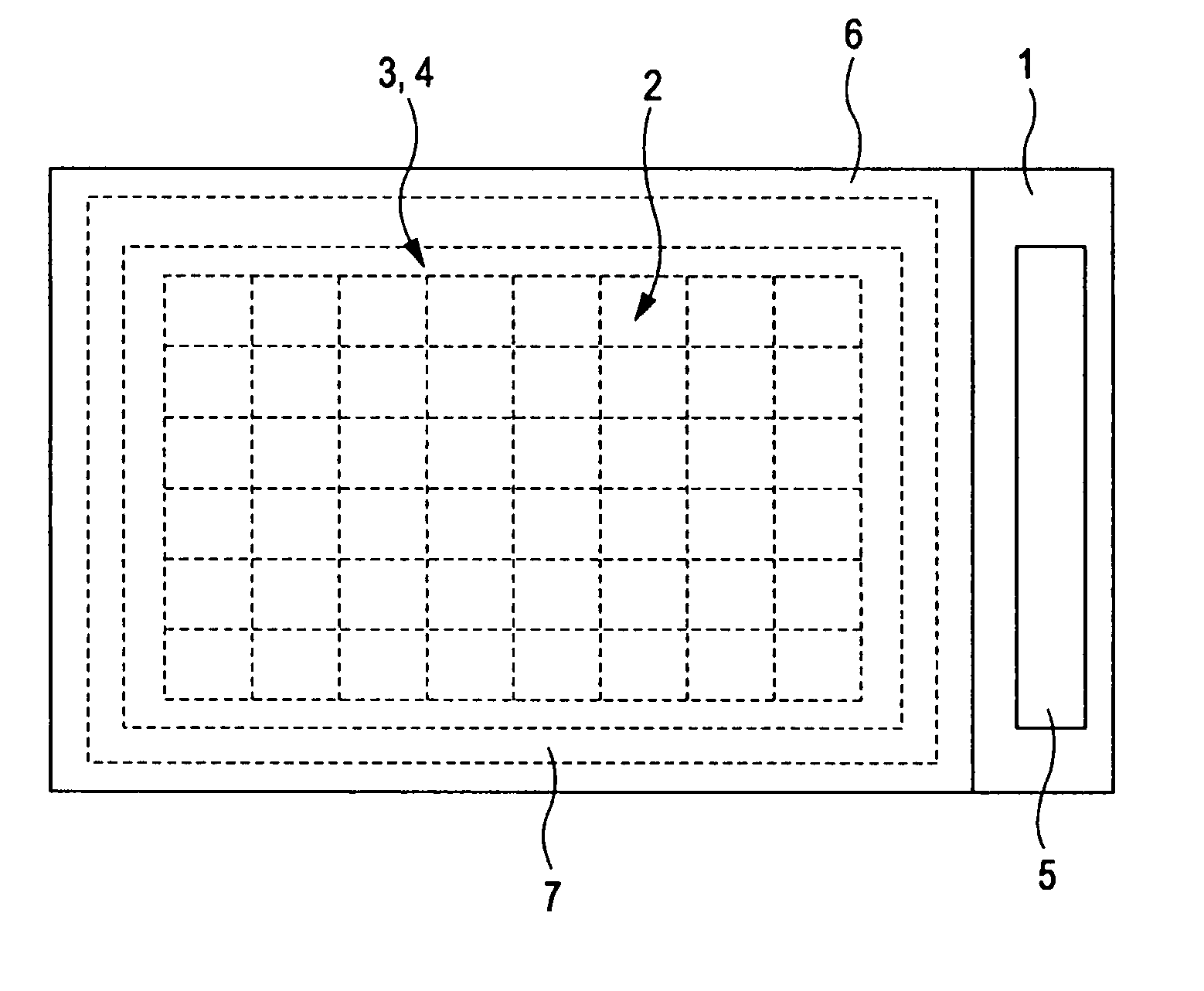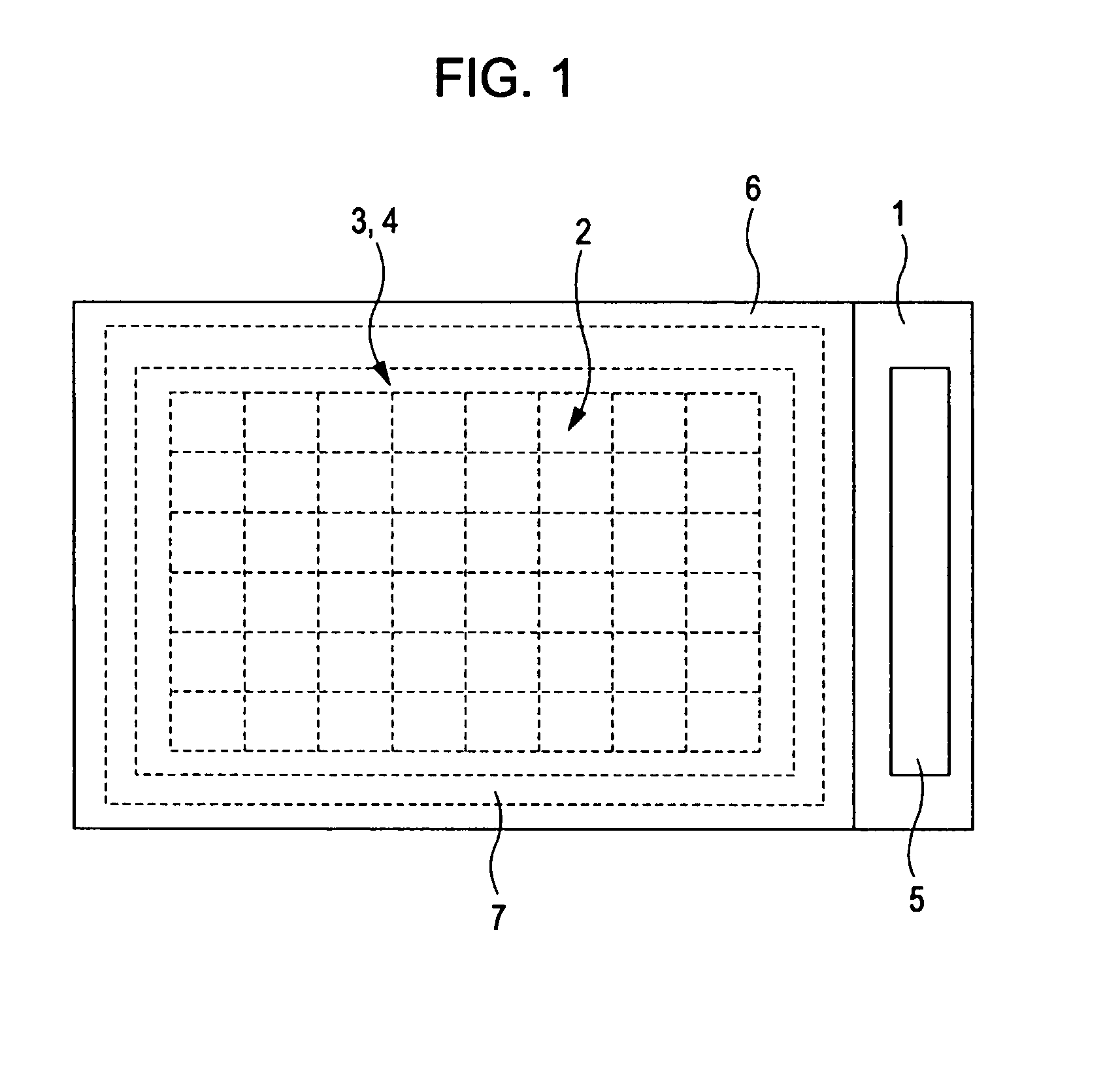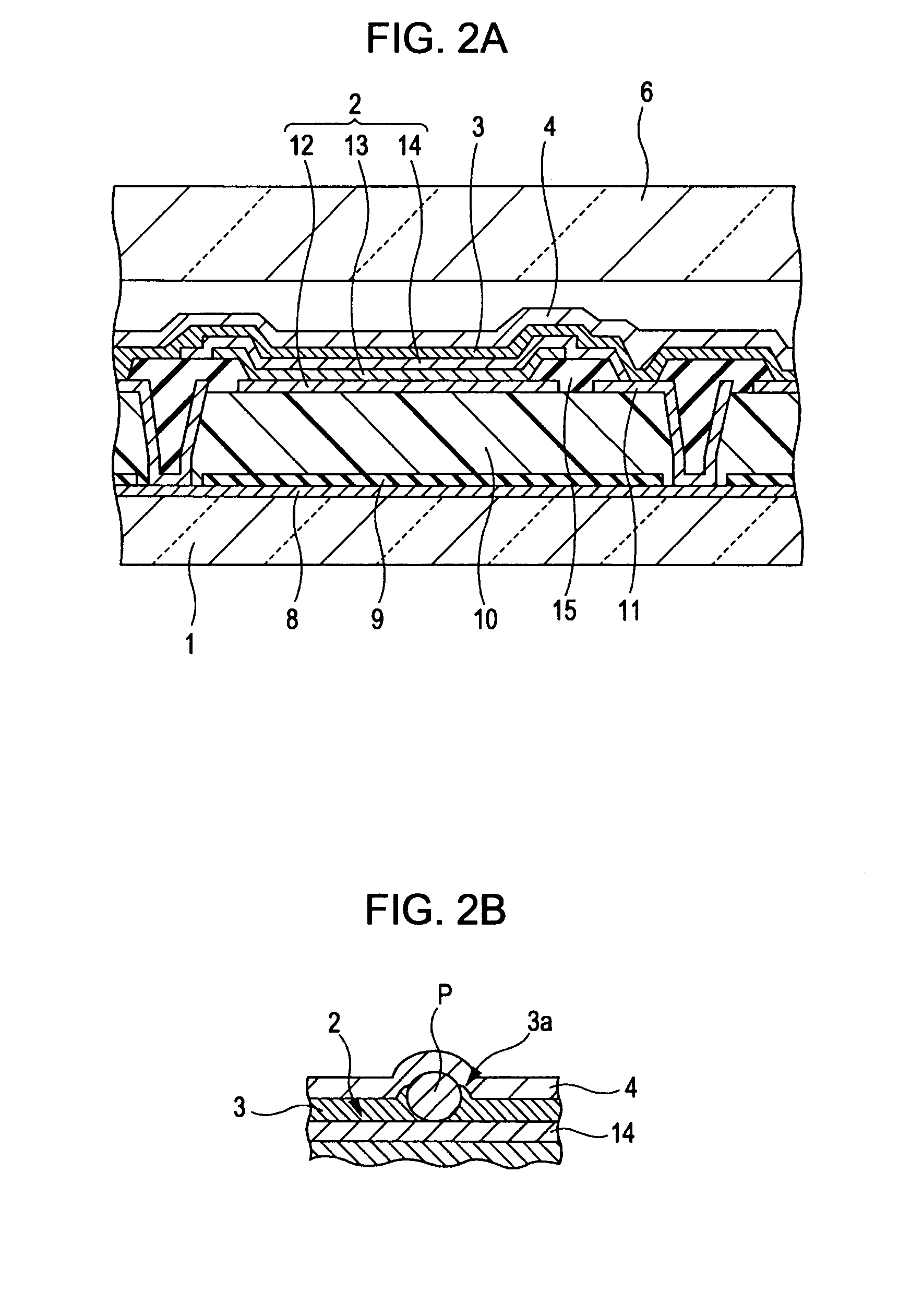Organic EL display and manufacturing method thereof
a technology of organic el and manufacturing methods, applied in the direction of discharge tube luminescnet screens, discharge tube/lamp details, coatings, etc., can solve the problems of decreased yield, foreign matter, and inability to easily adhere to the protective layer around foreign matter, so as to improve the sealing properties of organic el elements
- Summary
- Abstract
- Description
- Claims
- Application Information
AI Technical Summary
Benefits of technology
Problems solved by technology
Method used
Image
Examples
first embodiment
Organic EL Display
[0023]An organic EL display according to a first embodiment is used in an electric household appliance, such as a television, or an electronic apparatus, such as a mobile phone or a computer device, and includes a planar element substrate 1 and organic EL elements 2 disposed on the element substrate 1, as illustrated in FIG. 1. A capping layer 3 and a protective layer 4 are disposed on the organic EL elements 2.
[0024]The element substrate 1 is composed of glass or plastic. A plurality of organic EL elements 2 are arranged in a matrix on a display region located in the center of the element substrate 1. A driver IC 5 configured to control light emission of the organic EL elements 2 is mounted on a non-display region located at an end of the element substrate 1.
[0025]A cover substrate 6 is disposed on the element substrate 1 so as to be opposed to the element substrate 1. The cover substrate 6 is a transparent substrate and can be composed of, for example, glass or p...
second embodiment
[0058]An organic EL display according to a second embodiment will be described below with reference to FIG. 5. The parts different from the first embodiment will be mainly described.
[0059]In the organic EL display according to the second embodiment, a first protective layer 16, a capping layer 3, and a second protective layer 17 are formed in that order on an upper electrode layer 14. Each of the first protective layer 16 and the second protective layer 17 is composed of, for example, an inorganic material, such as SiNx (04 described above. Each of the first protective layer 16 and the second protective layer 17 is formed by known CVD. The first protective layer 16 and the second protective layer 17 protect the organic EL element 2 from moisture and external air as in the protective layer 4.
[0060]By forming the capping layer 3 on the first protective layer 16, even when the first protective layer 16 has a gap such as a pinhole, the gap can be covered with the capping layer 3. Furthe...
third embodiment
[0062]An organic EL display according to a third embodiment will be described below with reference to FIG. 6. The parts different from the first embodiment will be mainly described.
[0063]In the organic EL display according to the third embodiment, a partition wall 18 having a reversed-tapered shape in which the bottom is narrower than the top is formed on an interlayer insulation film 15, and an organic material layer 3 is formed on the side surface of the partition wall 18.
[0064]When an organic EL element 2 is formed by known vapor deposition, the upper surface of the partition wall 18 functions as an eaves or a mask so that an organic layer 13 and an upper electrode 14 are not continuously formed at the inclined side surface of the partition wall 18. Consequently, the upper electrode layer 14 can be divided into the individual pixels.
[0065]After an organic material layer 3′ is formed on the partition wall 18 and the organic EL element 2 by vapor deposition, a capping layer 3 is fo...
PUM
| Property | Measurement | Unit |
|---|---|---|
| refractive index | aaaaa | aaaaa |
| refractive index | aaaaa | aaaaa |
| thickness | aaaaa | aaaaa |
Abstract
Description
Claims
Application Information
 Login to View More
Login to View More - R&D
- Intellectual Property
- Life Sciences
- Materials
- Tech Scout
- Unparalleled Data Quality
- Higher Quality Content
- 60% Fewer Hallucinations
Browse by: Latest US Patents, China's latest patents, Technical Efficacy Thesaurus, Application Domain, Technology Topic, Popular Technical Reports.
© 2025 PatSnap. All rights reserved.Legal|Privacy policy|Modern Slavery Act Transparency Statement|Sitemap|About US| Contact US: help@patsnap.com



